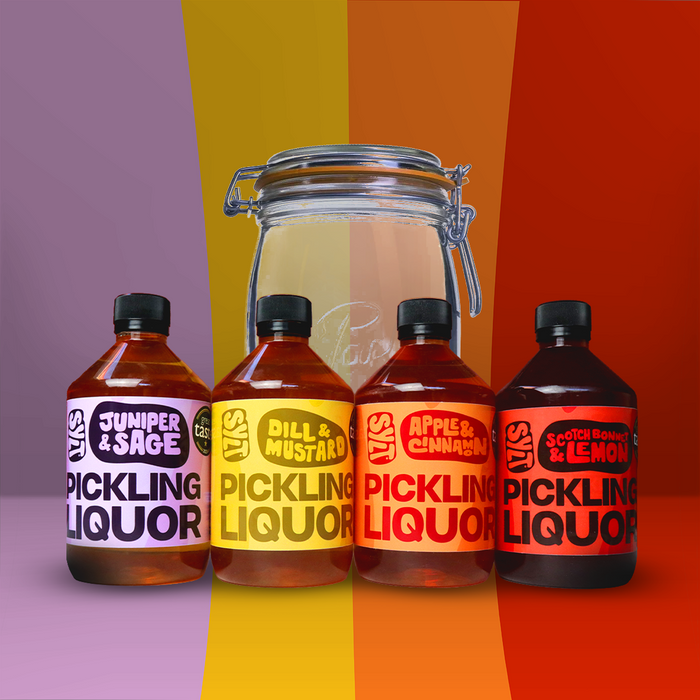Guide to Pickling and Preserving Fish
Guide to Pickling and Preserving Fish
Pickling fish at home is a rewarding way to enjoy a preserved delicacy, and using pickling vinegar can simplify the process. Here’s a step-by-step guide to get you started:
Ingredients:
- Fresh fish (like trout, herring, or salmon)
- Your choice of Sylt Pickling Vinegar
- Optional: sliced onions, garlic, or lemon
Equipment:
- A clean jar or container with a tight-fitting lid
- A bowl for mixing
Step by Step Guide to Pickling Fish:
- Prepare the Fish:
- Clean and fillet the fish, removing any bones. You can leave the skin on or off, depending on your preference.
- Cut the fish into uniform pieces or fillets.
- Pack the Jar:
- Place your fish pieces into a clean jar. If you’re using optional ingredients like onions or garlic, add them between layers of fish.
- Add the Pickling Solution:
- Pour your pickling liquid over the fish, ensuring it is fully submerged. Leave a small gap at the top of the jar.
- Seal and Refrigerate:
- Seal the jar tightly. Allow it to cool to room temperature, then refrigerate. Let the fish pickle for at least 48 hours, though the flavour will improve with time.
Enjoy your homemade pickled fish as an appetizer, in salads, or as a savoury snack. Properly sealed and stored in the refrigerator, pickled fish can last for several weeks.
Exploring Different Types of Pickled Fish
Pickling is a time-honoured method for preserving and enhancing the flavours of various fish. Here’s a look at how pickling works for different types of fish, including herring, mackerel, eel, salmon, and trout.
- Herring:
Herring is one of the most popular fish for pickling, especially in Scandinavian and Eastern European cuisines. Its firm, oily flesh absorbs pickling brine well, resulting in a tangy, flavourful product. Common pickling variations include sweet-sour herring with onions and spices or a spiced version with Dill & Mustard. Pickled herring can be enjoyed as a standalone appetiser or as part of a larger meal.
- Mackerel:
Mackerel is another oily fish ideal for pickling. Its strong, robust flavour pairs well with vinegar, sugar, and spices. The pickling process helps to mellow out the fish's natural oils while infusing it with aromatic notes. Mackerel is often pickled with a mix of onions, bay leaves, and peppercorns, creating a zesty and flavourful dish. Pickled mackerel is commonly used in sandwiches, salads, or served as part of a tapas-style spread.
- Salmon:
Salmon’s firm flesh and mild flavour make it a versatile candidate for pickling. Pickled salmon can be prepared with a range of brines, from a simple salt and vinegar mixture to more elaborate recipes including dill, garlic, and mustard seeds. The result is a flavourful, preserved fish that works well in salads, sandwiches, or as a gourmet addition to various dishes.
- Trout:
Trout, with its tender flesh, is also suited for pickling. It can be pickled in a variety of brines, including those with herbs, spices, and vegetables. Trout is often pickled in a light, acidic brine that preserves its delicate texture while infusing it with a subtle, tangy flavour, and Juniper & Sage ticks all the boxes, such as in this ceviche recipe. Pickled trout is an excellent choice for appetisers or as a component in a fish platter.
- Smelt:
- Sardines:
Each type of fish offers a unique texture and flavour profile when pickled or preserved, making pickling a versatile method for extending the shelf life of the fish and exploring new flavour combinations.



